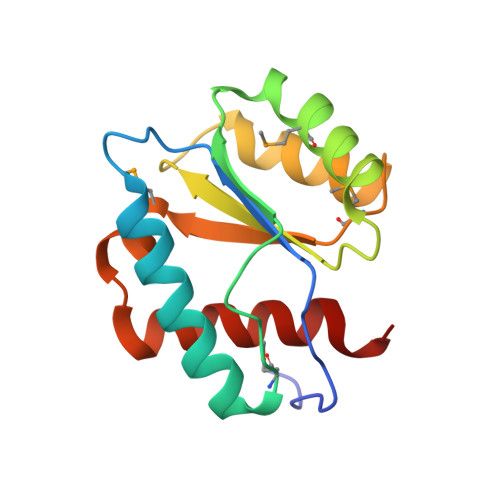Structural basis for 5'-nucleotide base-specific recognition of guide RNA by human AGO2.
Frank, F., Sonenberg, N., Nagar, B.(2010) Nature 465: 818-822
- PubMed: 20505670
- DOI: https://doi.org/10.1038/nature09039
- Primary Citation of Related Structures:
3LUC, 3LUD, 3LUG, 3LUH, 3LUJ, 3LUK - PubMed Abstract:
MicroRNAs (miRNAs) mediate post-transcriptional gene regulation through association with Argonaute proteins (AGOs). Crystal structures of archaeal and bacterial homologues of AGOs have shown that the MID (middle) domain mediates the interaction with the phosphorylated 5' end of the miRNA guide strand and this interaction is thought to be independent of the identity of the 5' nucleotide in these systems. However, analysis of the known sequences of eukaryotic miRNAs and co-immunoprecipitation experiments indicate that there is a clear bias for U or A at the 5' position. Here we report the crystal structure of a MID domain from a eukaryotic AGO protein, human AGO2. The structure, in complex with nucleoside monophosphates (AMP, CMP, GMP, and UMP) mimicking the 5' end of miRNAs, shows that there are specific contacts made between the base of UMP or AMP and a rigid loop in the MID domain. Notably, the structure of the loop discriminates against CMP and GMP and dissociation constants calculated from NMR titration experiments confirm these results, showing that AMP (0.26 mM) and UMP (0.12 mM) bind with up to 30-fold higher affinity than either CMP (3.6 mM) or GMP (3.3 mM). This study provides structural evidence for nucleotide-specific interactions in the MID domain of eukaryotic AGO proteins and explains the observed preference for U or A at the 5' end of miRNAs.
Organizational Affiliation:
Department of Biochemistry, McGill University, Montréal, Québec H3G 0B1, Canada.

















